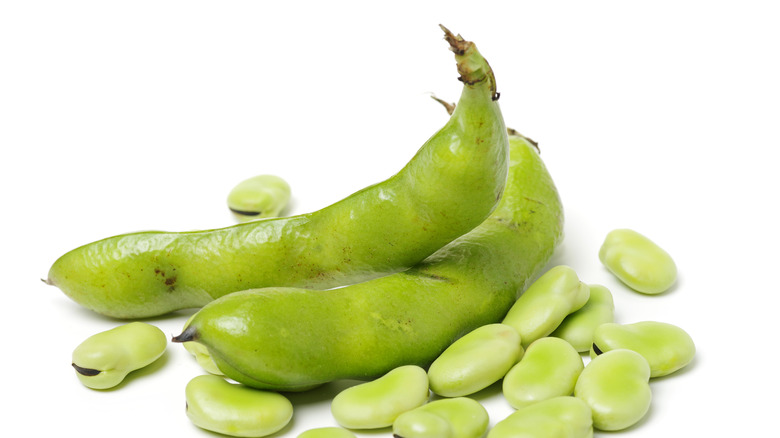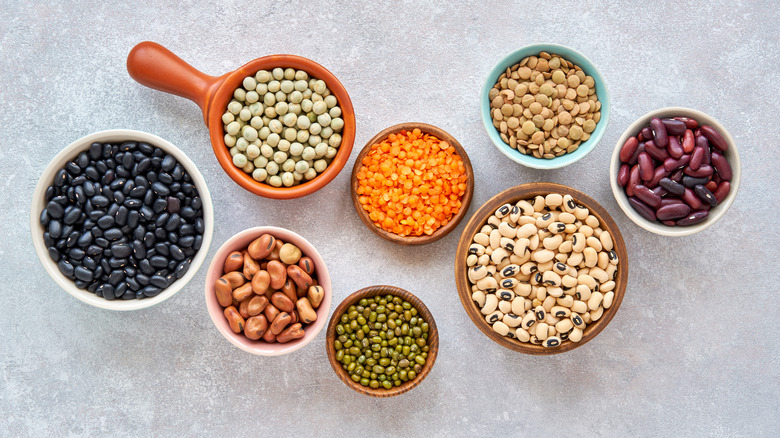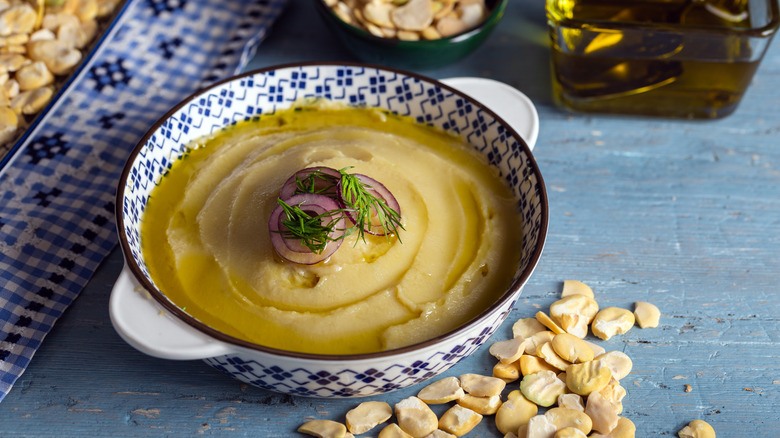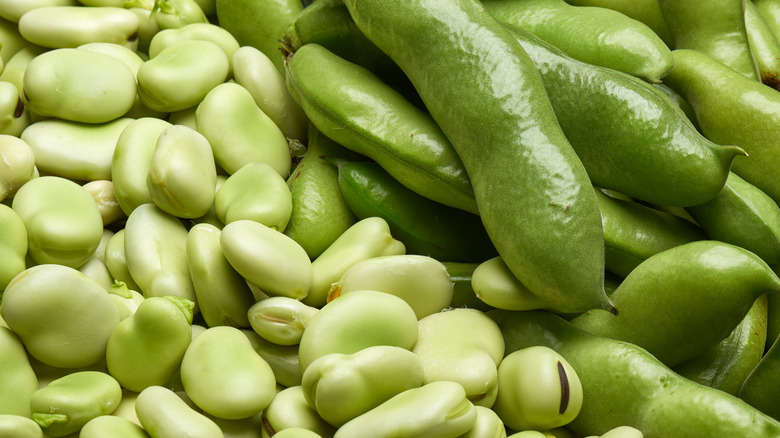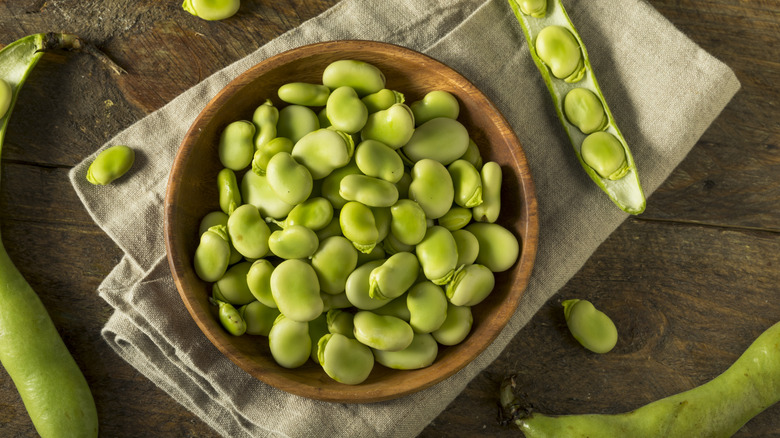Everything You Need To Know About Fava Beans
Fava beans were on everyone's radar once Hannibal Lecter said the famous line, "I ate his liver with some fava beans and a nice Chianti." Classy meal choice. Fava beans, funnily enough, are a pretty diverse bean, so it's understandable why Lecter would make that part of his meal.
Also known as broad beans, fava beans have been around far longer than Lecter, first being eaten all the way back in 6000 BCE, per The Spruce Eats. Apparently they were feasted upon by the ancient Greeks, Romans, and others of the eastern Mediterranean. They have made their way into parts of Asian, Middle Eastern, European, and African cuisine.
They're similar to lima beans, if you are trying to imagine what they are, but they are a bit more diverse when it comes to styles of cooking and ways they can be eaten. Fun fact: According to Scientific American, the beans in "Jack and the Beanstock" are believed to have been fava beans.
What is a fava bean?
There are what seem like a trillion and one names for fava beans. For example, they are also known as vicia faba and faba beans. Whatever you want to call them, the best thing to know is that they are indeed a bean. They come from a flowering plant that is in the pea and bean family, Fabaceae, says Food Print.
Fava beans are lumpy, big green pods that are kind of similar in look to edamame. They grow from the flowering pea plant in spring time and while harvesting them is easy, prepping them can be a bit difficult and certainly time-consuming.
Inside the pods there are large, green, flat beans that have a tough skin, which is usually removed before eating. Having to peel every bean could definitely be why these bad boys tend to be pricier than average beans and why their rise to popularity in America took so long.
How to cook with fava beans
Though Lecter wasn't specific, there are any number of ways he might have enjoyed his side of fava beans. These beans can be eaten raw, boiled, steamed, stewed, mashed, sauteed, fried, or roasted. However you decide to cook them, the most basic of all steps is to soak them just as you would any other bean.
Fava beans have a tough skin, so they are usually blanched in the beginning to help ensure the skin comes off. Blanching them is a pretty simple process. You simply remove them from their pods, boil them in hot water for 30 seconds, transfer to a bowl of ice water, and peel, per All Recipes. Once you have done this, you can cook them in any way mentioned above.
One easy way to eat fava beans is by mashing them up, much as you would potatoes. You will either mash by hand or with a food processor. All Recipes says mixing it up with some ricotta, lemon zest, salt, and pepper, will give you a creamy and decadent fava-and-ricotta toast recipe.
You may notice that the beans turn brown when cooking, but don't be alarmed; that's normal. In fact, it is all because of a compound called proanthocyanidins, "molecules that don't participate in the usual fruit browning, but that fragment during cooking into anthocyanins." Those are the pigments that give color to most red fruits and vegetables, as Curious Cook explains.
Can you substitute fava beans?
While it is pretty common to be able to get fava beans at places like Walmart or even online, it's always good to know how you can switch them out if they happen to be unavailable. Since they are just a bean and don't hold much flavor, it is an easy thing to substitute.
For any recipe that calls for fava beans, you can always replace them out with lima beans, per All Recipes. Lima beans and fava beans are very similar in texture, taste, and appearance, making the switch an easy one. For substitution in a stew or soup recipe, using canned beans such as cannellini is a better option.
The list goes on, actually. In fact, kidney beans work just as well as cannellini if you prefer one over the other. Since fava beans are in the same family as peas, you can always replace them with peas instead. Granted, these two taste a bit different and peas are mushier, but they still work (via Gourmet Leuth).
Nutritional benefits
These little green pods are a powerhouse for nutrients. Beans are a substitute many people enjoy when they want to get their protein without eating meat. Fava beans are just as good for that as others. Heathline says these beans are packed with plant protein, folate, and a ton of minerals.
In just 170 grams or half a cup of fava beans has only 187 calories, 33 grams of carbs, less than one gram of fat and 13 grams of protein (via Healthline). On top of that, there are nine grams of fiber, 40% of a person's daily value of folate, 26% of manganese, 22% of copper, 21% of phosphorus, and 18% of magnesium.
There is an abundance of other top-notch packed into these pods too. Per SFGATE (which calls them "dense with nutrition"), they have thiamin, vitamin K, vitamin B-6, potassium, copper, magnesium, and zinc. To sum it up, eating a serving of fava beans will benefit your health in a variety of ways.
